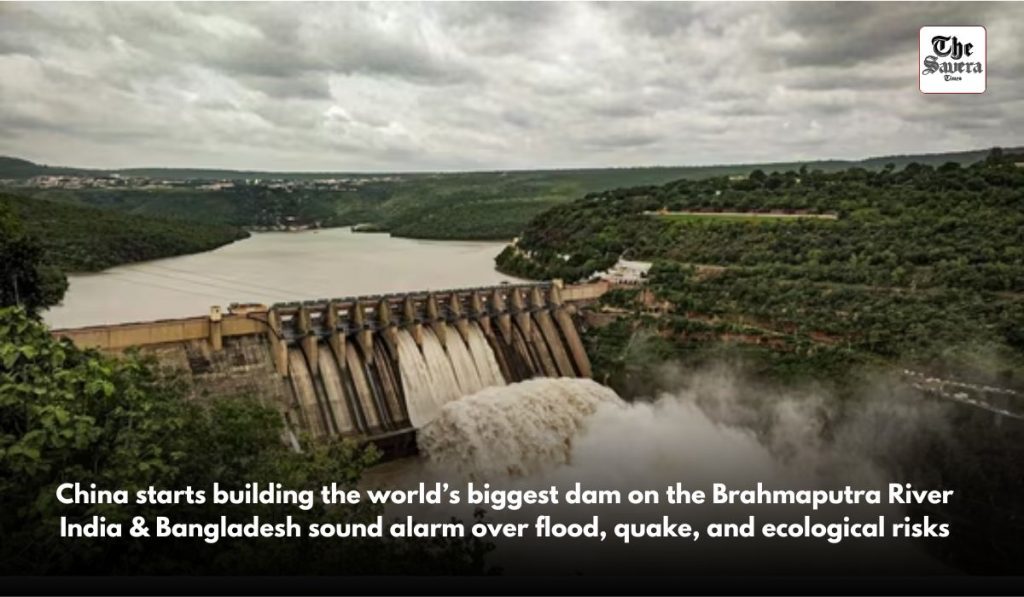Beijing, July 20: China has started building the world’s largest dam on the Brahmaputra River (Yarlung Tsangpo in China) in Tibet. Chinese Prime Minister Li Keqiang inaugurated it on Saturday.
Its total cost is said to be around $167.8 billion (about Rs 12 lakh crore). This dam is being built in Nyingchi city bordering Arunachal Pradesh. Both India and Bangladesh have expressed deep concern over this.
According to China’s official news agency Xinhua, the project will have five cascade hydropower stations. This will generate more than 300 billion kilowatt-hours of electricity every year. This electricity can meet the needs of 30 crore people.
Why is India opposing the dam?
The dam to be built on the Brahmaputra river will be built in a vast valley of the Himalayas on the eastern edge of the Tibet plateau. Earthquakes occur frequently in this area. The construction of the dam may put pressure on the ecosystem, which may lead to many accidents.
The north-eastern states of India and Bangladesh are already facing severe flood incidents, and due to climate change, they may face more challenges like landslides, earthquakes and floods etc. This is the reason why the construction of this dam has increased India’s concern.
The spokesperson of the Indian Foreign Ministry had raised objections to this dam in a press briefing on January 3. India had said that building a dam on the Brahmaputra should not harm the interests of the downstream states.
India is also building a dam on the Brahmaputra
India is also building a big dam on this river in Arunachal Pradesh. Since 2006, an Expert Level Mechanism (ELM) has been going on between India and China regarding water flow data on Brahmaputra and Sutlej.
This issue also figured in talks between NSA Ajit Doval and Chinese Foreign Minister Wang Yi in December last year.
In 2015, China started the $1.5 billion Jame Hydropower Station in Tibet. Even then, India had expressed concern that China could gradually take over the water level and direction of the Brahmaputra.
